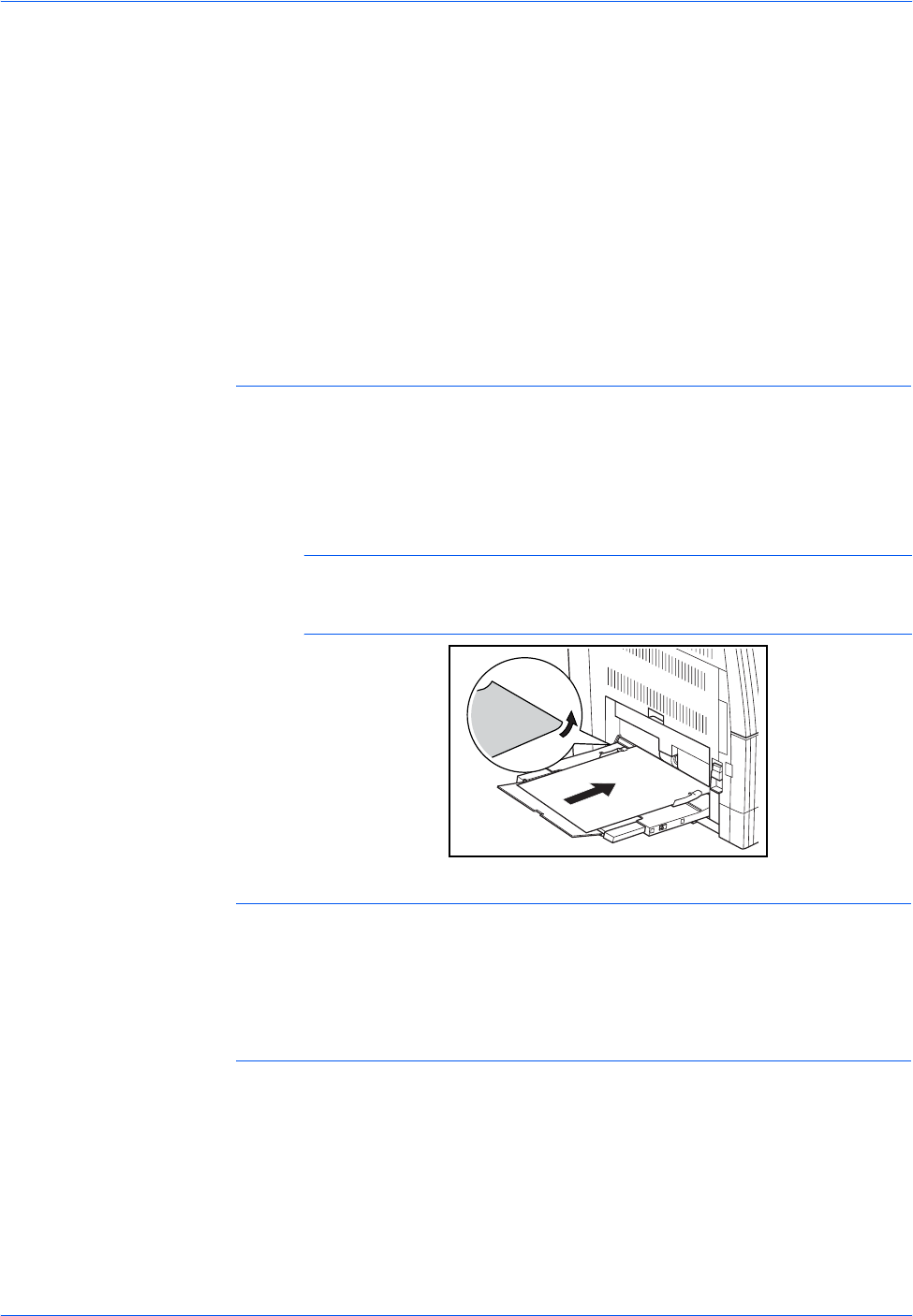
Appendix
ADVANCED OPERATION GUIDE Appendix-9
• Unpack the envelopes just before using them, do not use envelopes
which have been left out for a long time.
• Do not use any envelopes on which adhesive is exposed. Even if
adhesive is not exposed, if simple peeling of paper exposes adhesive,
do not use such envelopes. If a small piece of paper that covers the
adhesive is peeled in this machine, a serious failure may occur.
• Do not use envelopes with special treatment. Do not use envelopes
with a grommet for winding a string, those with an open window or
those with a window to which film treatment is applied.
• If paper jams occur, load fewer envelopes at a time.
• When printing onto multiple envelopes, avoid stacking more than 10
envelopes in the Output Tray to prevent paper jams.
Thick Paper
Fan the stack of paper and align the edges before loading them in the MP
tray. Some types of paper have rough edges on the back (those are
created when the paper is cut). In this case, put the paper on a flat place
and rub the edges once or twice with, for example, a ruler to smooth them.
Feeding rough edged paper may cause paper jams.
NOTE: If the paper jams even after you smooth it out, load the paper in
the Multi-Bypass Tray with the leading edge raised up a few millimeters as
shown in the illustration below.
Colored Paper
Colored paper should satisfy the same conditions as white bond paper,
refer to Paper Specifications, on page Appendix-2. In addition, the
pigments used in the paper must be able to withstand the heat of fusing
during the printing process (up to 200°C or 392°F).
Preprinted Paper
Preprinted paper should satisfy the same conditions as white bond paper,
refer to Paper Specifications, on page Appendix-2.The preprinted ink must
be able to withstand the heat of fusing during the printing process, and
must not be affected by silicone oil.
Do not use paper with any kind of surface treatment, such as the type of
paper commonly used for calendars.


















